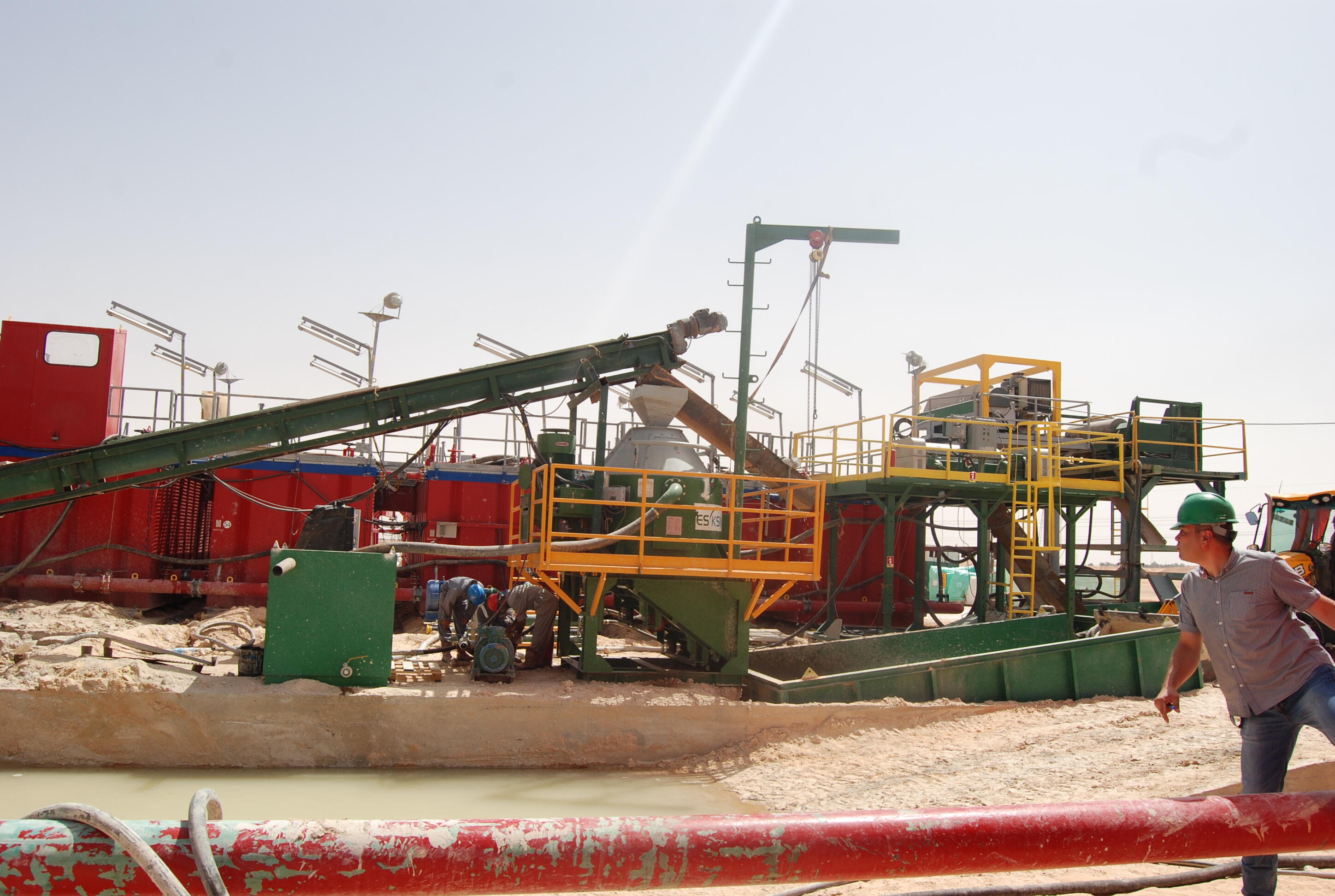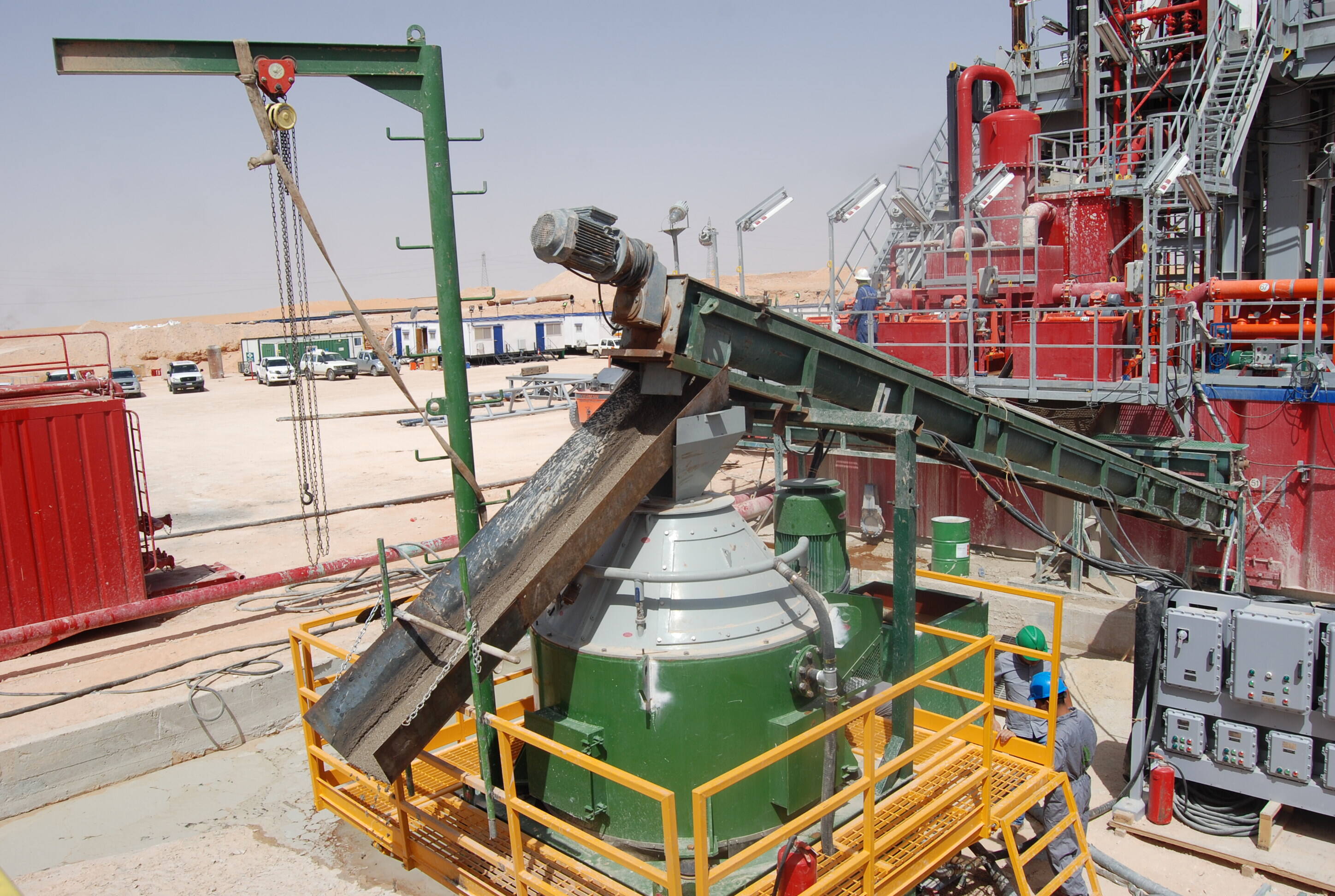Ժամանակակից հասկացություն Դրիլինգի աղումների հաստատում Լուծումներ
Նավթի և բնական գազի արդյունաբերությունը շարունակում է զարգանալ, և դրա հետ հորատման աղբի արդյունավետ վերամշակման համակարգերի նշանակությունը դարձել է առանցքային: Այս բարդ համակարգերը կարևոր դեր են խաղում շրջակա միջավայրի պաշտպանության, կարգավորող համապատասխանության և գործողությունների արդյունավետության մեջ: Ինչպես կորումներ ավելի բարդ են դառնում, համապատասխան հորատման աղբի վերամշակման համակարգի ընտրությունը կարող է մեծ ազդեցություն ունենալ ինչպես շրջակա միջավայրի կայունության, այնպես էլ վերջնական արդյունքների վրա:
Ժամանակակից փորման գործողությունները առաջացնում են թափոնների մեծ ծավալներ, ներառյալ փորման կտրոններ, օգտագործված փորման հեղուկներ և կապված թափոններ: Ճիշտ ընտրված փորման թափոնների մշակման համակարգը ոչ միայն օգնում է արդյունավետ կառավարել այդ նյութերը, այլ նաև հնարավորություն է տալիս օպերատորներին համապատասխանել խիստ շրջակա միջավայրի նորմերին՝ միաժամանակ օպտիմալացնելով շահագործման ծախսերը:

Արդյունավետ թափոնների մշակման համակարգերի հիմնարար բաղադրիչներ
Մեխանիկական հանգումների տեխնոլոգիաներ
Կամայական փորման թափոնների մշակման համակարգի հիմքում ընկած է մեխանիկական անջատման տեխնոլոգիան: Այս հիմնարար բաղադրիչը ներառում է շեյկերներ, ցենտրիֆուգներ և հիդրոցիկլոններ, որոնք համատեղ աշխատում են՝ փորման հեղուկներից պինդ մասնիկները անջատելու համար: Այս մեխանիկական անջատման սարքերի արդյունավետությունը ուղղակիորեն ազդում է թափոնների մշակման գործընթացի ընդհանուր արդյունավետության վրա:
Բարդացված մեխանիկական անջատման տեխնոլոգիաները ներառում են բարդ ցանցապատ մեխանիզմներ և ճշգրիտ կառավարման համակարգեր, որոնք օպտիմալացնում են անջատման գործընթացը: Այս համակարգերը կարող են մշակել տարբեր թափոնների բաղադրություններ և հոսքի արագություններ, ինչը դրանք դարձնում է հարմարեցված տարբեր փորման պայմանների և պահանջների համար:
Քիմիական մշակման միավորներ
Քիմիական մշակման բաղադրիչները լրացնում են մեխանիկական անջատումը՝ հասցնելով ավելի փոքր մասնիկներին և լուծված աղտոտող նյութերին, որոնք մեխանիկական համակարգերը չեն կարող արդյունավետ հեռացնել: Այս միավորները օգտագործում են հատուկ ընտրված քիմիական նյութեր և ֆլոկուլյանտներ՝ անջատման գործընթացը բարելավելու և մշակված նյութերի որակը բարձրացնելու համար:
Ժամանակակից քիմիական մշակման միավորները հատկացված են ավտոմատ չափաբաժնի համակարգերով և իրական ժամանակում հսկողության հնարավորություններով, որոնք ապահովում են քիմիական նյութերի օպտիմալ օգտագործումը՝ պահպանելով մշակման հաստատուն որակը: Այս ճշգրտությունը օգնում է օպերատորներին քիմիական նյութերի սպառումը նվազագույնի հասցնել ցանկալի մշակման արդյունքների հասնելու համար:
Շրջակա միջավայրի հարցերը համակարգերի ընտրության ժամանակ
Կարգավորման համապատասխանության հնարավորություններ
Շրջակա միջավայրի վերաբերյալ կարգավորումները շարունակում են խստանալ, ինչը կարևոր գործոն է դարձնում հորատման թափոնների մաքրման համակարգ ընտրելիս: Ժամանակակից համակարգերը պետք է ներառեն հնարավորություններ, որոնք ապահովում են մաքրված թափոնների համապատասխանությունը տեղական և միջազգային շրջակա միջավայրի չափորոշիչներին կամ դրանցից ավելի բարձր մակարդակի պահպանումը: Դրանք ներառում են հսկման հնարավորություններ, փաստաթղթավորման համակարգեր և անվտանգության մեխանիզմներ:
Ժամանակակից մաքրման համակարգերը հաճախ ներառում են ինտեգրված շրջակա միջավայրի հսկման գործիքներ, որոնք իրական ժամանակում հետևում են հիմնարար պարամետրերին՝ թույլ տալով օպերատորներին ցույց տալ համապատասխանությունը և անհրաժեշտության դեպքում անմիջապես կատարել ճշգրտումներ: Այդ հնարավորությունները օգնում են պաշտպանել օպերատորներին հնարավոր կարգավորման խնդիրներից՝ պահպանելով գործարկման արդյունավետությունը:
Բնապահպան գործարկման գործնական օրինակներ
Կայունականությունը գերազանցում է պարզ համապատասխանությունը, ներառյալ էներգաարդյունավետությունը, ջրի պահպանումը և թափոնների նվազեցումը: Առաջատար հորատման թափոնների մաքրման համակարգերը ներառում են նախագծման տարրեր, որոնք օպտիմալացնում են ռեսուրսների օգտագործումը՝ մաքրման արդյունավետությունը ավելացնելու համար: Սրանք ներառում են էներգաարդյունավետ շարժիչներ, ջրի վերամշակման հնարավորություններ և թափոնների ծավալի նվազեցման տեխնոլոգիաներ:
Ընտրելով համակարգեր, որոնք աջակցում են կայունականությանը, օպերատորները կարող են նվազեցնել իրենց ազդեցությունը շրջակա միջավայրի վրա՝ հաճախ ստանալով կարևոր տնտեսական տնտեսագիտություն ռեսուրսների ցածր սպառման և թափոնների հեռացման պահանջների շնորհիվ:
Շահագործման արդյունավետության գործոններ
Մշակման հզորություն և ճկունություն
Բացի ներկայից, հորատման աղբի մշակման իդեալական համակարգը պետք է համընկնի նաև ապագա գործողությունների պահանջների հետ: Դա ներառում է մշակման բավարար հզորություն գագաթնային թափոնների ծավալների հետ մղման համար, միևնույն ժամանակ պահպանելով ճկունությունը ցածր պահանջարկի շրջաններում արդյունավետ գործարկման համար: Ժամանակակից համակարգերը հաճախ ունեն մոդուլային դիզայն, որը թույլ է տալիս հզորության ճշգրտումներ կատարել անհրաժեշտության դեպքում:
Ընդլայնված կառավարման համակարգերը թույլ են տալիս օպերատորներին մշակման պարամետրերը օպտիմալացնել թափոնների հատկությունների և ծավալների տատանումների հիման վրա, ապահովելով հաստատուն արդյունավետությունը տարբեր գործողությունների պայմաններում: Այս ճկունությունը օգնում է պահպանել մշակման արդյունավետությունը՝ նվազագույնի հասցնելով շահագործման ծախսերը:
Պահպանման և հուսալիության առանձնահատկություններ
Համակարգի հուսալիությունը ուղղակիորեն ազդում է շահագործման արդյունավետության և բուժման արդյունավետության վրա: Առաջատար հորատման թափոնների բուժման համակարգերը ներառում են հարմարակերտ նախագծման հնարավորություններ, որոնք նվազագույնի են հասցնում սպասարկման պահանջները՝ ապահովելով միատեսակ արդյունքներ: Դրանց թվում են մաշվածադիմացկուն նյութեր, պարզեցված սպասարկման մուտքի կետեր և հսկման համակարգերի լիարդյունավետ համալիր:
Ընտրվող համակարգի դեպքում պետք է հաշվի առնել պարբերական սպասարկման պահանջները, քանի որ դրանք կարող են մեծապես ազդել շահագործման ծախսերի և համակարգի հասանելիության վրա: Ժամանակակից համակարգերը հաճախ ներառում են կանխատեսողական սպասարկման հնարավորություններ, որոնք օգնում են օպերատորներին արդյունավետ կերպով ծրագրել սպասարկման գործողությունները՝ նվազագույնի հասցնելով անսպասելի դադարները:
Ծախսերի համեմատական վերլուծություն և ROI վերլուծություն
Նախնական ներդրումների գնահատում
Չնայած սկզբնական ծախսերը կարևոր են, սակայն դրանք պետք է գնահատվեն երկարաժամկետ շահագործման առավելությունների շրջանակներում: Ժամանակակից փոշու մշակման համակարգերը կարող են պահանջել ավելի բարձր նախնական ներդրումներ, սակայն հաճախ ապահովում են ավելի լավ եկամուտներ բարելավված արդյունավետության, ավելի ցածր ոչնչացման ծախսերի և նվազագույն սպասարկման պահանջների շնորհիվ:
Ծավալուն համակարգերը հաճախ ներառում են այնպիսի հնարավորություններ, որոնք թույլ են տալիս նվազեցնել թափոնների ծավալը և վերականգնել նյութերը՝ ստեղծելով լրացուցիչ արժեքի հոսքեր, որոնք կարող են փոխհատուցել սկզբնական ներդրումների ծախսերը: Ընտրության գործընթացում անհրաժեշտ է հատուկ ուշադրություն դարձնել այդ առավելություններին:
Շահագործման ծախսերի գնահատում
Երկարաժամկետ շահագործման ծախսերը կարևոր դեր են խաղում համակարգի ընտրության գործում: Դրանք ներառում են էներգասպառումը, քիմիական նյութերի օգտագործումը, սպասարկման պահանջները և աշխատանքային կադրերի կարիքը: Ժամանակակից համակարգերը հաճախ ավտոմատացման և օպտիմալացման հնարավորություններ են ապահովում, որոնք կարող են զգալիորեն կրճատել շահագործման ծախսերը ժամանակի ընթացքում:
Նավահանգստի գործարկման համար անհրաժեշտ է հաշվի առնել այդ հանգամանքները, որպեսզի ընտրենք այն համակարգերը, որոնք ապահովում են ամենալավ հավասարակշռությունը կատարում և արդյունավետությունը ծախսերի տեսանկյունից իրենց հատուկ գործառնական պահանջների համար: Այս վերլուծությունը պետք է ներառի նաև հնարավոր ապագա կանոնական փոփոխությունների և գործառնական աճի ծրագրերի հնարավորությունը:
Հաճախ տրվող հարցեր
Ի՞նչ ամենակարևոր հանգամանքներ պետք է հաշվի առնել հորատման թափոնների մշակման համակարգ ընտրելիս:
Ամենակարևոր հանգամանքները ներառում են մշակման հզորության պահանջները, կանոնական համապատասխանության հնարավորությունները, գործառնական արդյունավետության հնարավորությունները, սպասարկման պահանջները և սեփականության ընդհանուր արժեքը: Բացի այդ, հաշվի առեք համակարգի ճկունությունը՝ տարբեր տեսակի և ծավալի թափոններ մշակելու հնարավորության և ապագա կանոնական պահանջներին համապատասխանելու ունակության տեսանկյունից:
Ինչպե՞ս կարող են գործարկողները ապահովել, որ ընտրված համակարգը համապատասխանի ապագա կանոնական պահանջներին:
Ընտրեք այն համակարգերը, որոնց աշխատանքային հնարավորությունները գերազանցում են գործող կանոնական չափանիշները և հնարավորություն են տալիս բաղադրիչների արդիականացման: Համագործակցեք այն արտադրողների հետ, ովքեր ցուցաբերում են համառ միտում միջավայրի պահպանության ուղղությամբ և ակտիվորեն մասնակցում են կանոնական կարգավորման քննարկումներին: Նախընտրեք համակարգեր, որոնց մոդուլային կառուցվածքը թույլ է տալիս ապագա արդիականացումներ և փոփոխություններ:
Ինչ դեր է խաղում ավտոմատացումը ժամանակակից փորման աղբի մաքրման համակարգերում:
Ավտոմատացումը կարևոր դեր է խաղում մաքրման արդյունավետության բարելավման, շահագործման ծախսերի նվազեցման և համապատասխանության ապահովման գործում: Ժամանակակից ավտոմատ համակարգերը կարողանում են իրական ժամանակում կարգավորել մշակման պարամետրերը, հսկել աշխատանքային ցուցանիշները և տրամադրել լիարժեք փաստաթղթեր կանոնական հաշվետվությունների համար: Սա նվազեցնում է աշխատանքային ծախսերը՝ միաժամանակ բարելավելով մաքրման համապատասխանությունն ու հուսալիությունը:
Ինչպե՞ս կարող են օպերատորները առավելագույն չափով վերադարձնել ներդրումները՝ ընտրելով մաքրման համակարգ:
Վերադարձի նվազագույն ցուցանիշը ավելագույնի հասցնելու համար գնահատեք ինչպես անմիջկան այնպես էլ երկարաժամկետ օգուտները, ներառյալ թափոնների հեռացման ավելի ցածր արժեքը, ռեսուրսների վերականգնման բարելավումը, սպասարկման պահանջների նվազումը և գործողությունների ավելի բարձր արդյունավետությունը: Նախընտրեք համակարգեր, որոնք ապահովում են ճկունություն ապագա ընդլայնման համար և ունեն կատարյալ հսկողական հնարավորություններ՝ անընդհատ արդյունավետության օպտիմալացման նպատակով:
Բովանդակության աղյուսակ
- Ժամանակակից հասկացություն Դրիլինգի աղումների հաստատում Լուծումներ
- Արդյունավետ թափոնների մշակման համակարգերի հիմնարար բաղադրիչներ
- Շրջակա միջավայրի հարցերը համակարգերի ընտրության ժամանակ
- Շահագործման արդյունավետության գործոններ
- Ծախսերի համեմատական վերլուծություն և ROI վերլուծություն
-
Հաճախ տրվող հարցեր
- Ի՞նչ ամենակարևոր հանգամանքներ պետք է հաշվի առնել հորատման թափոնների մշակման համակարգ ընտրելիս:
- Ինչպե՞ս կարող են գործարկողները ապահովել, որ ընտրված համակարգը համապատասխանի ապագա կանոնական պահանջներին:
- Ինչ դեր է խաղում ավտոմատացումը ժամանակակից փորման աղբի մաքրման համակարգերում:
- Ինչպե՞ս կարող են օպերատորները առավելագույն չափով վերադարձնել ներդրումները՝ ընտրելով մաքրման համակարգ:

